What Makes A Planet? Lessons Learned 14 Years After Pluto’s Demotion
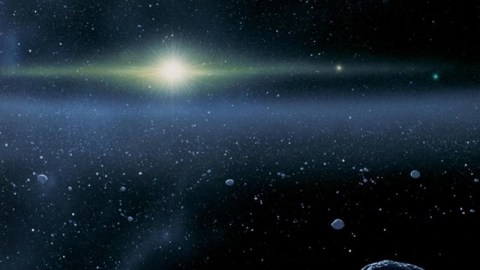
In 2006, the IAU demoted Pluto. Here’s what we know today.
In 2006, the last planet in our Solar System suffered an unforgettable insult, as Pluto — known for generations as our ninth planet — was demoted to the status of dwarf planet. A series of discoveries from ground-based and space-based telescopes had revealed much of what was out there beyond Neptune, and Pluto fit in much better as a standard member of these Kuiper belt objects than it did with any of the other eight planets. As a result, the International Astronomical Union’s new definition demoted Pluto to the status of “dwarf planet,” even as the New Horizons mission was already on its way.
In the 14 years since, however, we’ve made an amazing slew of discoveries. We’ve continued to find, identify, and characterize objects in the Kuiper belt. New Horizons visited Pluto and revealed this outer world as never before. Additionally, missions like NASA’s Kepler and TESS have found thousands of new exoplanets, while independent observations have discovered an interstellar population of long-suspected rogue planets: planets without parent stars. It’s still a controversial subject today, but here’s what we know about planets in our Universe.
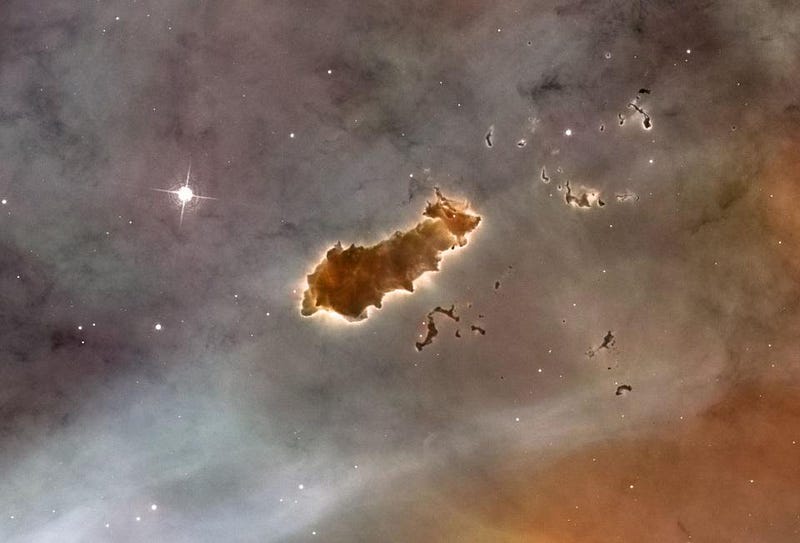
The first thing we all need to understand is where planets comes from. Whenever you have a large cloud of molecular gas in space, it has the potential to become a veritable factory for forming new planets. The way we’ve most often conceived of it is the way we think it happened for our Solar System long ago:
- a cool cloud of gas collapses under its own gravity,
- which fragments into various clumps,
- the largest, densest, highest-mass clumps lead to stars,
- which ignite nuclear fusion, form a circumstellar disk, and that disk gets its own gravitational imperfections in it, which lead to planets and, sometimes, multi-star systems.
Over the past few years, telescopes that specialize in long-wavelength observations, such as infrared or microwave/radio bands, have revealed these planet forming “gaps” in these protoplanetary disks for the first time. Owing to these groundbreaking astronomical observations, we can actually watch the process of planets forming in action.
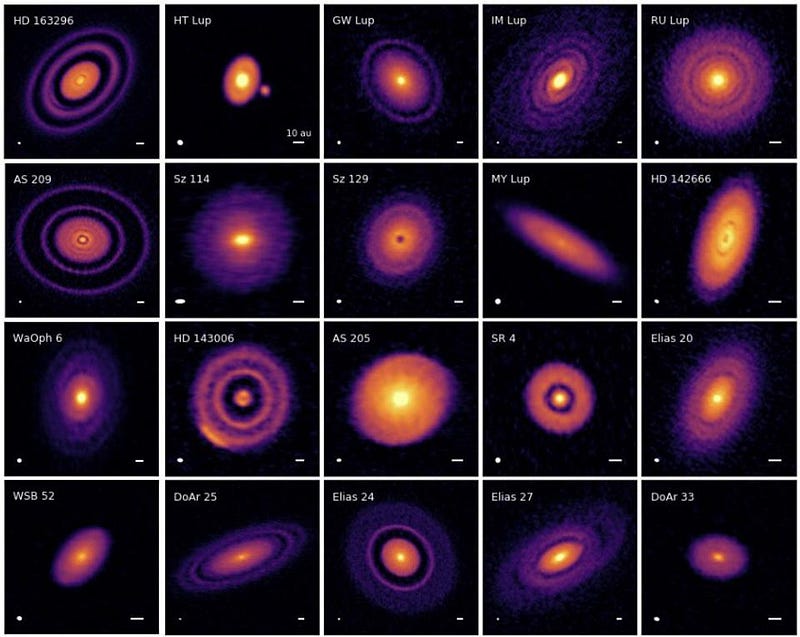
At a later stage, we can observe the mature planetary systems that wind up forming around these stars. The three major methods by which we observe these exoplanetary systems are:
- the transit method, where planets pass periodically between a distant star and our telescopes,
- the stellar wobble method, where a planet’s gravitational pull on its star causes a periodic redshift/blueshift to the star’s light,
- and direct imaging, which can reveal bright planets that are well-separated from their parent star.
What we’ve learned is absolutely fascinating. Planets come in a wide variety of sizes, from smaller than Mars and Mercury to larger than the size of Jupiter, and orbit at a wide variety of distances. Giant and rocky planets can coexist within the same solar system at any distance they like. Our Solar System, with inner, rocky planets and outer, gas giant planets, is not even the most common option.

We’ve learned that the most common mass/size combination for a planet is intermediate between Venus/Earth and Uranus/Neptune: a class of worlds that was given the name “super-Earth” early on. For years in the early 2010s, one question that astronomers wondered about was, “why don’t we have a super-Earth in our Solar System?”
But it turned out that was the wrong question, as better data revealed. NASA’s Kepler mission was able to reveal the radius and orbital parameters of thousands of new exoplanets, but follow-up observations (mostly using the stellar wobble method) were required to learn the masses of those exoplanets. When we plotted them all out, we learned something fascinating.
Instead of the artificial class of “super-Earth” that we had invented, there were only three classes of planet:
- terrestrial planets, which were rocky and had only thin atmospheres,
- Neptune-like giants, which had substantial hydrogen/helium envelopes,
- and Jupiter-like giants, which were gas dominated but also exhibited gravitational self-compression.

That’s it, at least for planets that orbit around stars. But do you have to be orbiting around a star to be considered a planet?
Not necessarily. In theory, there are two ways to have what we call a “rogue planet,” or a planet without a parent star. You can either:
- form a planet as part of a solar system, and then have gravitational interactions eject it,
- or fail to gather enough mass to form a star in a portion of a gas cloud, forming a planet that never had a parent star.
We suspect that, for every solar system like ours that forms, one Uranus-sized world and five-to-ten terrestrial worlds are formed and ejected, sent out into interstellar space by gravitational interactions. Over the 14 years since Pluto’s demotion, we’ve actually found some of these rogue planets: through either microlensing (where they pass between the line-of-sight to a star, temporarily brightening it) or, when we get the luckiest, by direct infrared observations.
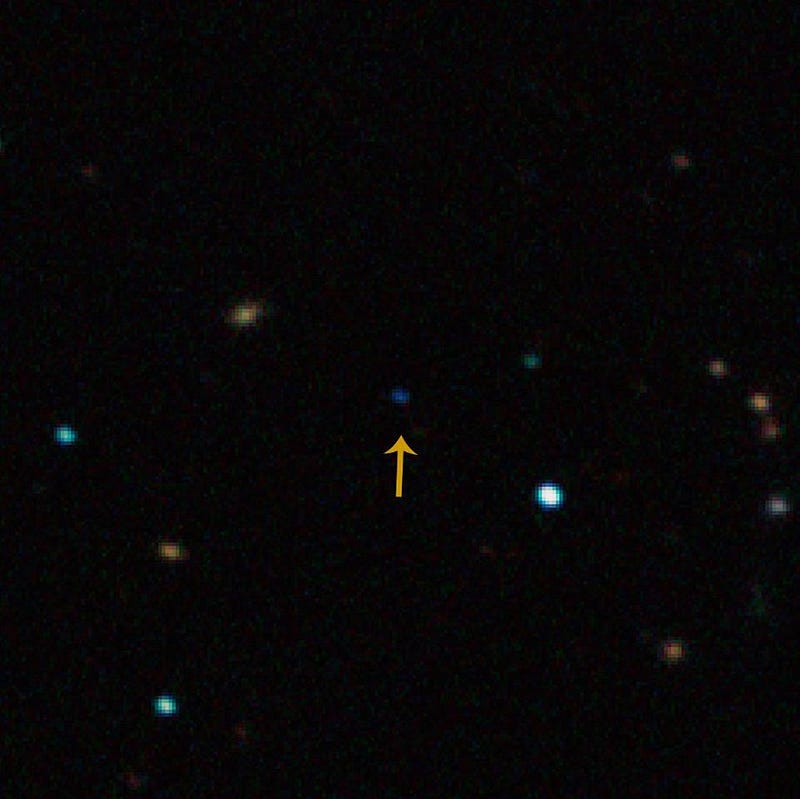
However, the science of microlensing is still in its infancy, but is about to get tremendously better with the next generation of telescopes, and the Vera Rubin Observatory in particular. The rogue planets that are out there are beyond the reach of direct imaging, but should be floating throughout the galaxy. When they pass through the line-of-sight that connects our telescopes to a star, they should cause a characteristic, brief brightening, which should allow us to begin estimating how many of them (and what masses they have) are out there.
In theory, the ejected rogue planets are the vast minority; the overwhelming majority of them should come from the “failed star formation” scenario. According to a 2012 study, for every star that formed in our galaxy, we should have somewhere between 100 and 100,000 of these rogue planets that form as well. They are forever destined to wander, parentless, through interstellar space.
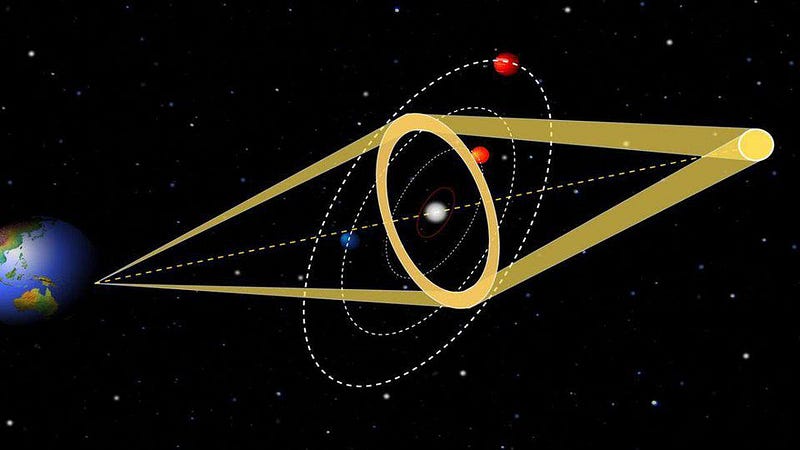
At the same time, our visit to Pluto with the New Horizons spacecraft has revealed to us exactly what this distant dwarf planet is like. The world is geologically fascinating, with its own atmosphere complete with hazes, ice mountains and plains that float atop a thick liquid ocean, snowy weather patterns, and a complex and varied surface that evolves over time. In many ways, it’s more complex and has more potential for interesting chemical reactions — possibly even including biological activity — than bona fide planets such as Mercury.
Its lunar system, we can now conclude, was likely formed as the result of a giant impact, with large Charon and the four smaller, outer moons orbiting in resonance with one another. It is the largest object in the Kuiper belt now that Eris has been confirmed to be 1% smaller and Triton, the former largest body, has been captured by Neptune. In terms of size, Pluto truly is the current king of the Kuiper belt.
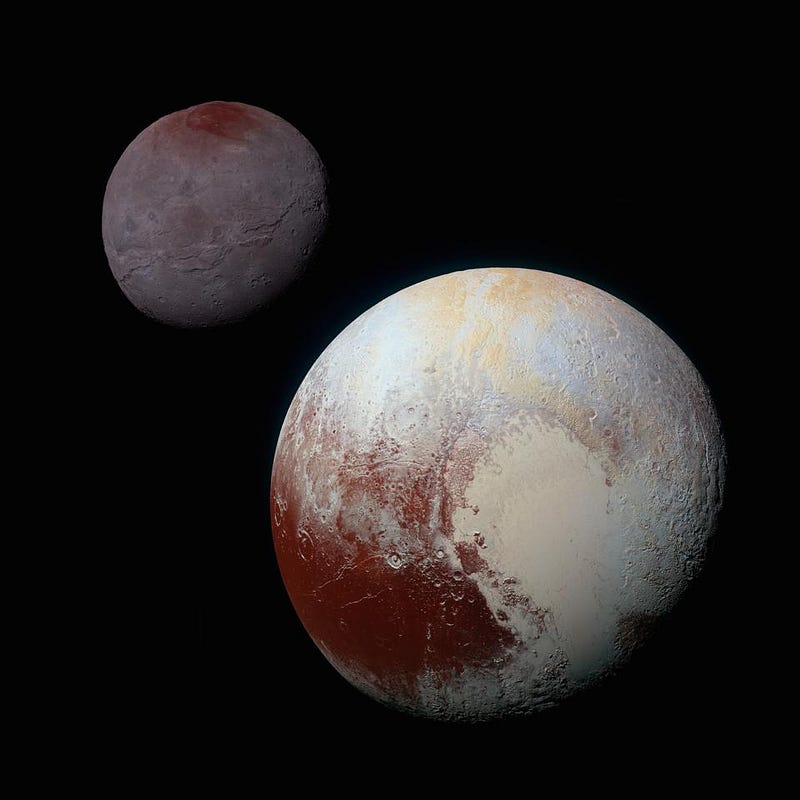
Nevertheless, it’s quite clear that Pluto is very different in terms of physical properties, formation history, and location than all of the other planets. It has the same composition as other Kuiper belt objects, with a low density and an atmosphere that’s created by volatiles interacting with solar radiation. It does not dominate its orbit, but rather is extremely low in mass and small in size. It has far more in common with Eris, Makemake, Haumea, and the other large trans-Neptunian objects than any of the planets.
In fact, it only meets two of the three criteria that the International Astronomical Union set forth in their definition of a planet (in our Solar System). They said that a planet must:
- have enough gravity to pull itself into hydrostatic equilibrium: spherical if you’re not spinning, spheroidal if you are,
- orbit the Sun and no other body (i.e., not be a moon),
- and must clear its orbit of other massive bodies on the timescale of the lifetime of the Sun.
Pluto doesn’t come close to meeting the third criteria, and so only those who go by geophysical definitions — where location and formation history are ignored — still consider Pluto a planet in any way.
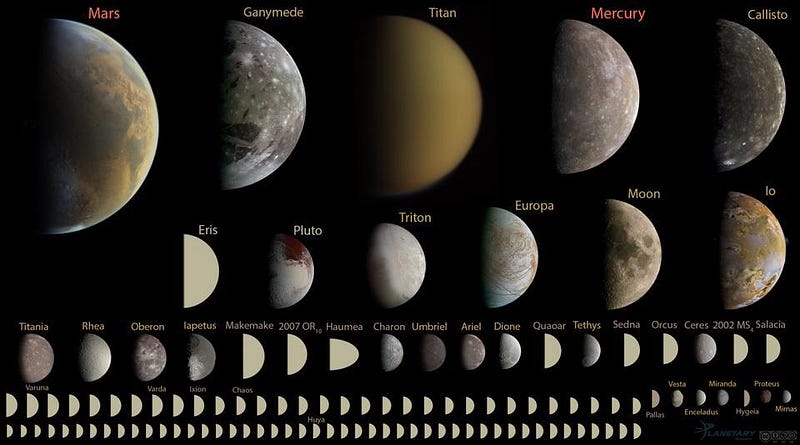
With the recent explosion in our knowledge of exoplanetary systems, astronomers began to wonder whether there was a way to extend our definition of “planet” to other solar systems. It isn’t possible to measure the shape of a planet that orbits another star, as they only appear point-like from our perspective. It also isn’t possible to determine whether a potential planet has cleared its orbit or not, as the smaller bodies that might orbit a distant star cannot be observed.
Fortunately, astronomer Jean-Luc Margot came up with a very clever method that relied only on measuring an exoplanet’s mass and orbital properties to determine whether it met the IAU’s criteria or not. Gravity works the same way everywhere in the Universe and in the galaxy, so for any particular distance, there’s a minimum mass that will clear its orbit on the timescale of a star’s lifetime. The 8 planets of the Solar System are all in; Pluto is clearly out. Interestingly enough, if the Earth-Moon system were replaced with our Moon alone, it would be right on the border of what constitutes (or doesn’t constitute) a planet.
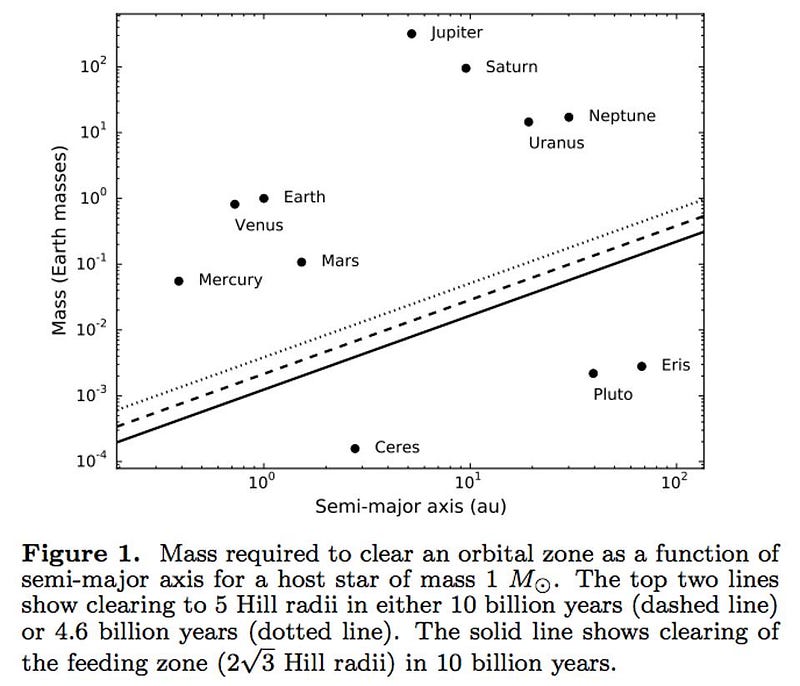
When we put all of this information together, a fascinating perspective emerges. Pluto, from a purely geophysical perspective, is a fascinating world in its own right. There are likely ~10 or so Pluto-like objects in every solar system like our own out there, but none of them will meet the criteria for planethood that we’ve set out, as none of them will dominate their orbits sufficiently. Planets themselves only come in three varieties: terrestrial worlds, Neptune-like giants, and Jupiter-like giants that exhibit self-compression. Within a solar system, nothing else meets the standards we’ve set forth.
But outside of a solar system, trillions upon trillions of rogue planets — which themselves do not meet the definition of planet — wander through interstellar space. We don’t know how many there are, what their mass distributions look like, or just what fraction of them were once “true planets” as part of a solar system versus the ones that were born without a parent star at all.
Pluto, from the perspective of an astronomer, was never a planet at all. But the Universe, no matter how you classify the objects within it, is all the richer on account of the rocky and icy bodies present within it.
Ethan Siegel is the author of Beyond the Galaxy and Treknology. You can pre-order his third book, currently in development: the Encyclopaedia Cosmologica.





